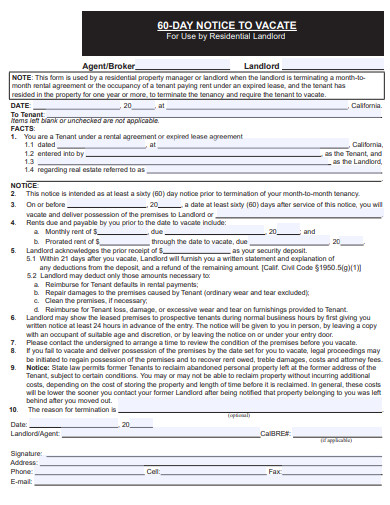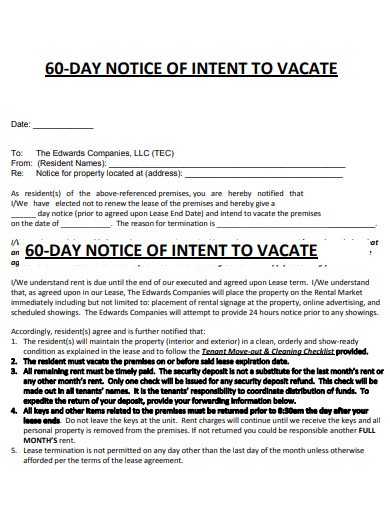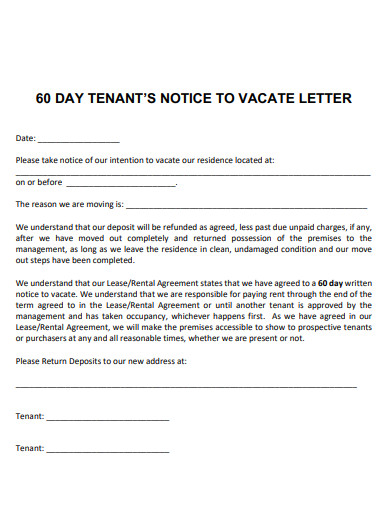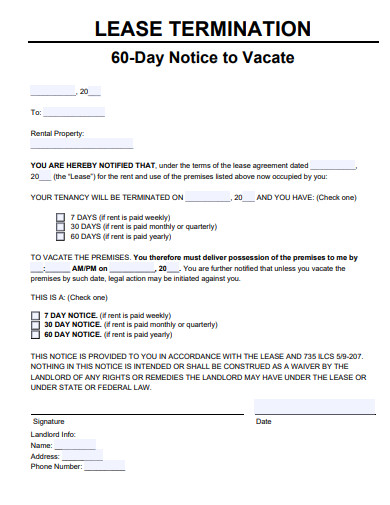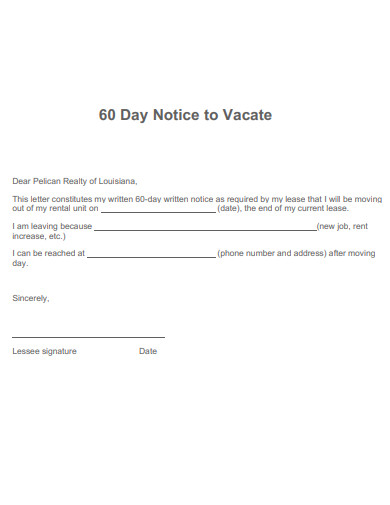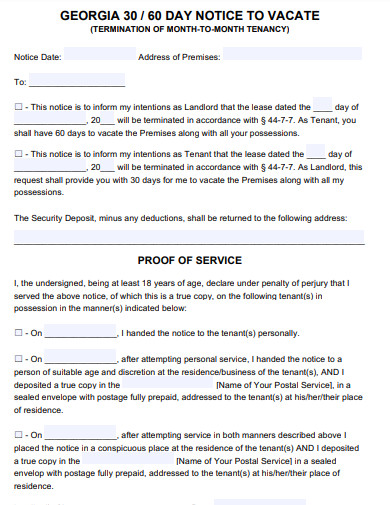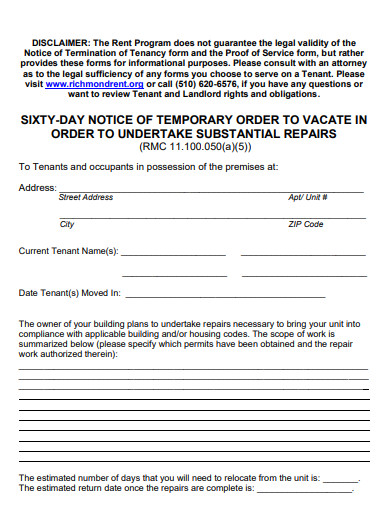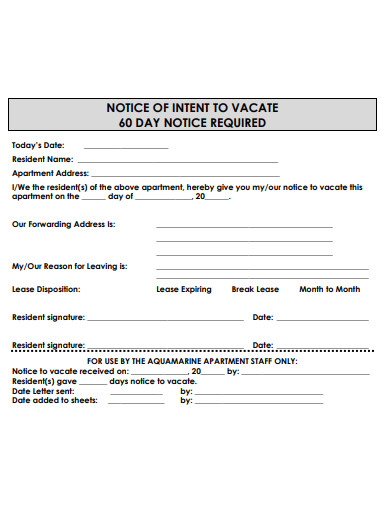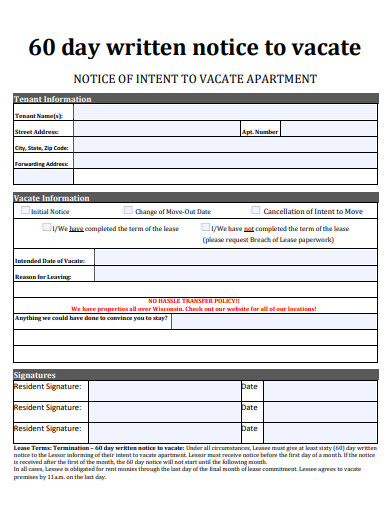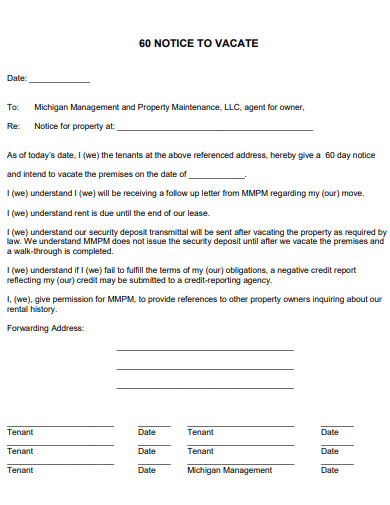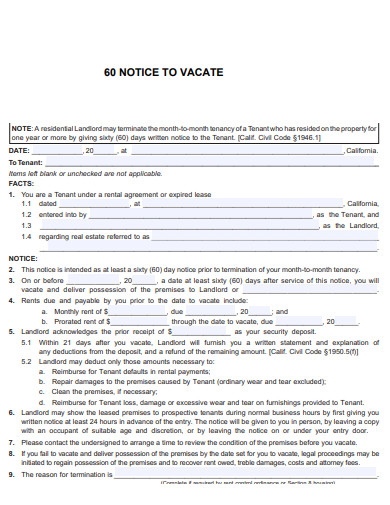When a landlord gives a 60 day notice to vacate, it is crucial that the notice includes specific information about the reason for the eviction, the date the tenant surrender or must vacate the property lease, and the address of the rental property. The notice must also be delivered to the tenant in a specific way, such as being personally delivered to the tenant, left at the rental property, or sent by certified mail.
10+ 60 Day Notice to Vacate
1. 60 Day Notice to Vacate
2. 60 Day Notice of Intent to Vacate
3. 60 Day Tenant Notice to Vacate Letter
4. 60-Day Notice to Vacate Lease Termination
5. 60-Day Notice to Vacate Template
6. 60-Day Notice to Vacate Tenancy
7. 60-Day Notice to Temporarily Vacate
8. 60-Day Notice Required to Vacate
9. 60-Day Written Notice to Vacate
10. Sample 60-Day Notice to Vacate
11. Simple 60-Day Notice to Vacate
What Is a 60 Day Notice to Vacate?
A 60 day notice to vacate is a legal document that a residential landlord gives to a tenant, informing them that they must vacate the rental property within 60 days. This notice is typically issued when the landlord wants the tenant to move out for a specific reason, such as non-payment of rent or violation of the lease agreement. The notice must be in writing and delivered to the tenant in a specific way, as outlined in the state’s landlord-tenant laws.
How to Make a 60 Day Notice to Vacate
It’s important to note that a 60 day notice to vacate is not the same as an eviction notice. An eviction notice is a legal document that is filed with the court after the landlord has given the notice to vacate. The eviction notice initiates a court case and gives the tenant an opportunity to contest the eviction. Here are the steps to make a 60 day notice to vacate:
Step 1: Determine the Reason
In most cases, a 60 day notice to vacate can be given for non-payment of rent or lease violation notice, but other reasons may be allowed depending on the laws of your jurisdiction.
Step 2: Write a Draft of the Notice
The notice should be in writing and should include the date of the notice, the date the tenant is expected to vacate the property, the address of the rental property, and a statement of the reason for the notice.
Step 3: Serve the Notice to the Tenant
The notice should be delivered to the tenant in person, or by certified e-mail or registered mail, with a return receipt requested. Some jurisdictions may require the notice to be posted on the door of the property or any other way as per the local laws.
Step 4: Wait for the Notice Period
The tenant has 60 days to vacate the property once the notice has been served. If the tenant does not vacate the property within the notice period, the landlord may need to file an eviction action with the court to remove the tenant.
FAQs
Who can serve a 60 day notice to vacate?
A 60 day notice to vacate can be served by the landlord or their authorized agent.
Can a tenant be evicted without a 60 day notice?
A tenant cannot be evicted without proper notice, as the notice period is mandatory and it is a legal requirement to serve the notice before the eviction process can begin.
How do I know if my 60 day notice to vacate is valid?
A valid 60 day notice to vacate should include the date of the notice, the date the tenant is expected to vacate the property, the address of the property, and a statement of the reason for the notice. It should also be properly served to the tenant according to the laws of the state or country where the property is located.
It is important to note that the notice period may vary from state to state or country to country, so it is always recommended to check the local laws and regulations for specific requirements.
Related Posts
FREE 10+ Notice of Intent to Vacate Samples in PDF
FREE 10+ Notice to Proceed Samples in PDF
FREE 10+ Violation Notice Samples in PDF
FREE 10+ Price Increase Notice Samples in PDF
FREE 10+ Past Due Notice Samples in PDF
FREE 12+ Legal Notice Samples in MS Word | Pages | Google Docs | PDF
FREE 10+ Health Insurance Exchange Notice Samples in PDF | DOC
FREE 10+ Meeting Notice Samples & Templates in Google Docs | MS Word | Apple Pages
FREE 10+ Employee Return to Work Samples in PDF | DOC
FREE 10+ Notice of Return to Work Samples [ Leave, Ability, Intent ]
FREE 9+ Sample Notice Agreement Templates in PDF
FREE 10+ Retail Notice Samples in PDF | MS Word
FREE 12+ Contractor Notice Samples in PDF | MS Word | Excel
FREE Why Is Notice of Copyright Important? [ Importance, Purpose, Elements, Advantages ]
FREE 11+ Rent Notice Samples & Templates in PDF | Google Docs | MS Word | Apple Pages

